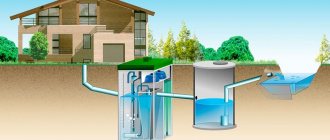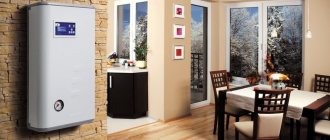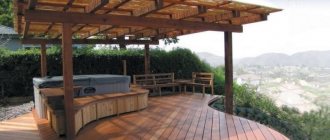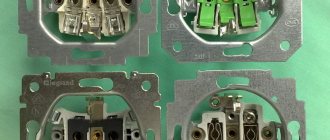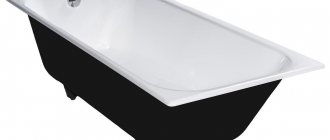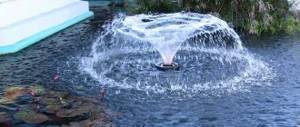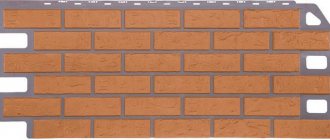Why pumping stations?
Both submersible structures and stations with a surface pump are used in conditions where there is no access to a central water supply. However, already at the preparation stage there are significant differences. For a submersible unit, for example, a fairly wide well is required, which is not always convenient to drill. In addition, drops in water level or voltage surges, which are not uncommon in our conditions, can have a negative impact on the submersible pump.
If a stable and uninterrupted supply of water to the house is required, a pumping station is used, the circuit of which includes a hydraulic accumulator - a special tank for creating a supply of water remaining in reserve. If water from the well is unavailable for one reason or another, the hydraulic accumulator makes it possible to temporarily use the stored water.
One of the advantages of pumping stations is the use of a pump located on the surface. This makes it possible to use a small diameter well, which is easier and cheaper to drill. In addition to the function of providing water directly to the home, the pumping unit is also used for other purposes of a private homeowner - watering, filling a summer shower or a decorative pond. A standard installation can provide a system pressure of about 1.5–2.8 atm. This is enough to create the necessary water pressure on the second floor of the house, and most private buildings are just one or two storeys.
The best option for water supply
A pumping station for a private home is called a household pumping station; this equipment is specially designed for use in houses and cottages where there is no access to water. The station can supply water from a river, well or well, and it is connected to the central water supply. This installation has the advantage of providing constant water pressure, which allows you to use water in the shower, for the washing machine and other appliances. Such a water station consists of:
- hydraulic accumulator;
- automatic control;
- pump
But in order for such a system to fully and constantly operate, it must be provided with power. The system operates autonomously, water is supplied to the house at the same pressure (there may be differences, but they are insignificant). The system has a pressure gauge that allows you to monitor pressure.
Selection criteria - needs and capabilities
One of the main parameters by which a pumping station is selected is its performance, that is, the potential ability to pump a certain volume of water through itself. This characteristic should correspond to consumption, not too small, but not too large. With low pressure, it’s clear that the required pressure is not created, the pump is too weak. If the productivity far exceeds the needs of the water supply system, then this harms both the well and the owner’s wallet (since he has to pay extra money for energy).
In addition, when choosing equipment, the following features are taken into account:
- total depth of the well;
- static water level in the well (measured in a well from which no water was drawn for 1–2 days);
- dynamic level (measured after continuous use of the well for 1–2 days).
These characteristics, which are different for each well, influence the choice of equipment, including the power of the water pump. Most surface installations work with sources where the water is at a level of 10 m or higher. The interval between the dynamic and static levels determines the productivity of the source (well), taking into account which the power of the station is also selected.
Many people try to create a certain safety margin and use overly powerful stations, but the price of such a solution can be high - too powerful equipment leads to silting of the well and contamination of the installation filters. The choice ultimately depends not only on the needs of the user, but also on the characteristics of the well. The parameters of the pumping station should ideally correspond to both.
Design and connection diagram of stations
Structurally, water supply pumping stations for a private home are installations consisting of the following elements:
- hydraulic pump;
- hydraulic accumulator;
- pressure switch;
- cables, connectors and terminals for connecting power supply and grounding;
- water purification filter;
- pressure gauge.
The design of the installation with a hydraulic accumulator is relatively new, and equipped with control equipment, this system is considered advanced today and has a minimum number of disadvantages. In the hydraulic accumulator, under water pressure, the air is compressed to a certain limit, after which the pump stops working and resumes it after the relay sends a signal that the minimum pressure threshold has been reached. If water is consumed in small quantities, but the pump does not start, water is supplied to the system from the accumulator.
According to the type of water raising, the scheme of a household station can be of two types:
- With built-in ejector . Installations of this type lift water from a relatively shallow depth (8–10 m). They are insensitive to various types of blockages, so they can be used to draw water from ordinary wells. However, the disadvantage of these systems is significant noise during operation, so it is not recommended to install them in the house. It is advisable to install the station in a utility room, or better yet, outside the house.
- With external hydraulic ejector . Installations of this design have the ability to lift water from fairly large depths (up to 50 m). They are characterized by a low level of noise produced during operation, which is why they are often installed directly in the house. However, stations of this type are highly sensitive to clogging of the ejector with sand or dirt, which, as reviews from owners show, is their main disadvantage. But an installation of this type easily delivers water to the house from a source located at a distance of 20–40 m.
Selecting a model by characteristics
How to choose a hydrophore for a private home:
- It is necessary to correctly calculate the distance from the pump to the water surface. The station is capable of moving 10 times more water mass horizontally than vertically. If the technical documentation indicates a lifting depth of 7 m, this means that horizontally the pump can draw water from a source located at a distance of 70 m.
- Calculate the power of the device to provide all water consumption points in the house.
- Consider how often power outages occur. In this case, you need to buy a model with a large storage tank to ensure uninterrupted flow.
- The performance of the device will determine how many liters per hour the pump can pump, and therefore whether it will cope with the load expected in the house.
- Installation method. If the source is located further than recommended in the technical documentation, then it is necessary to locate the equipment closer to the source, which will require the organization of a special recessed or semi-recessed dry room. A concreted, level area is required to ensure long-term uninterrupted operation.
- If you plan long-term operation, you need to pay attention to what materials the body and the container itself are made of. Tank models can be made of plastic, cast iron or stainless steel. If you expect long-term use, then the best option would be either cast iron or steel.
Experts who install and connect equipment advise buying pumps of greater power and, therefore, performance than needed for your home. This will help extend the life of the device because it will turn on less often.
Attention! A more powerful motor will subsequently allow you to connect other buildings on the site: a summer kitchen, an outdoor swimming pool, a garden or lawn watering system.
A domestic water supply pumping station has a capacity of 3000 to 6000 liters per hour. At the same time, for a residential building it is worth choosing a more powerful model. For a small country house, where the main need will be watering the garden, you can purchase a simpler unit. A pumping station for a summer residence can be equipped with filters for coarse cleaning so that the unit works longer and is less damaged by sand or small stones in the water.
For two or three-story mansions, you should buy units that are able to pump
8 - 12,000 l/hour. They differ slightly from the average models in the shape of the impeller, the diameter of the pipes, and the power of the motor.
The function of dry running protection is of great importance. Without it, the pump will fail faster, as it will overheat greatly, which will worsen the condition of the lubricant inside the structure.
It is almost impossible to track on your own when the water level drops and turn off the equipment in time. This function must be built into the pump from the start. The equipment will turn off automatically if the sensor in the well gives a signal about a drop in water level or a decrease in pressure in the system.
Prices for water supply pumping stations for a private home
Pumping stations are produced by many companies, both domestic and foreign. At the same time, the price of the simplest installations starts from 5 thousand rubles. As power increases, and depending on the manufacturer and configuration, the cost increases. Pumping stations with a capacity of about 2–3 cubic meters per hour and a power of 700–850 kW are quite common, the price of which ranges from 9–11 thousand rubles. The higher the productivity, pump power and the larger the volume of the hydraulic accumulator, the more expensive the installation. Quite a lot of stations are offered for sale in the range of 20–30 thousand, and some units for private houses cost 35–45 thousand rubles. There are many differences - different heights of water rise, power, productivity, country of origin. In addition, the cost is affected by the automation included in the kit, the volume of the hydraulic accumulator and other characteristics.
Is automation really necessary?
The presence of automation solves two pressing issues in the device design - the equipment is protected and a certain level of pressure is ensured in the water supply system. Protection can be useful against overheating, power surges, and dry running. Modern stations, of course, are not cheap, but they are equipped with comprehensive protection. The automation and sensor required for dry-running protection can be installed in the system regardless of the type of pump used.
The constant pressure is regulated by timely starting or stopping the pump. When the pressure drops or as it rises to the normal level, the corresponding automation turns on or stops the pump. At the same time, as user reviews show, installation requires virtually no human attention. It is clear that an automatic pumping station requires much less attention and is much more convenient to operate. However, the presence of automation makes the station more expensive, so the need to equip it is determined in each specific case individually. In houses where people live permanently, experts recommend using automatic stations.
Malfunctions and their elimination
The most common problem when operating water pumps with electric pumps is the lack of mains voltage. In this case, the station may not turn on or malfunction. Such problems should be resolved by checking the electrical network, power supply communications or the function of protective systems. For example, an incorrectly operating thermal protection can block the pump from turning on, even though the network provides sufficient voltage. It may be necessary to repair the water pumping station and replace the pump shaft. This component becomes blocked as a result of contamination, and if signs of deformation are detected, it should be renewed.
If the station is functioning stably, but there is no water supply, then problems with airing of the circuits are more likely to occur. Such phenomena occur if the air has not been completely released from the pump housing or the suction line has become airy. Accordingly, it will be necessary to check the circuits in individual areas and release air masses through the nipple. It happens that a water pumping station randomly turns on and off. If the electrical network is working properly and there are no signs of airing, then you will need to check the membrane of the hydraulic tank and communications for ingress of a large object that could block the water supply line and lead to automatic shutdown of the equipment.
Can I repair it myself?
It cannot be said that the design of a water supply pumping station for a private home is too complex and inaccessible to the understanding of the average person. Many components and system elements can be quite easily purchased and replaced yourself. The unit that directly pumps water consists of an electric motor and the pump itself. If the motor winding burns out, then in most cases there is no point in repairing it - it is easier to replace the entire motor. However, if parts of the pump fail, you can replace the impeller or the rotating mechanism itself. This can be done quite simply using ordinary screwdrivers and wrenches.
Malfunctions of the accumulator are usually associated with the membrane, as indicated by problems with pressure. The membrane is also for sale and can be replaced. The pressure switch can be adjusted, but it is not recommended to do this on your own without experience. However, no one bothers to entrust diagnostics and adjustment to an experienced specialist. In general, as in any other technical system, there are faults that can be easily repaired or replaced with failed parts, and there are those that require the help of an experienced and professional technician to eliminate.
